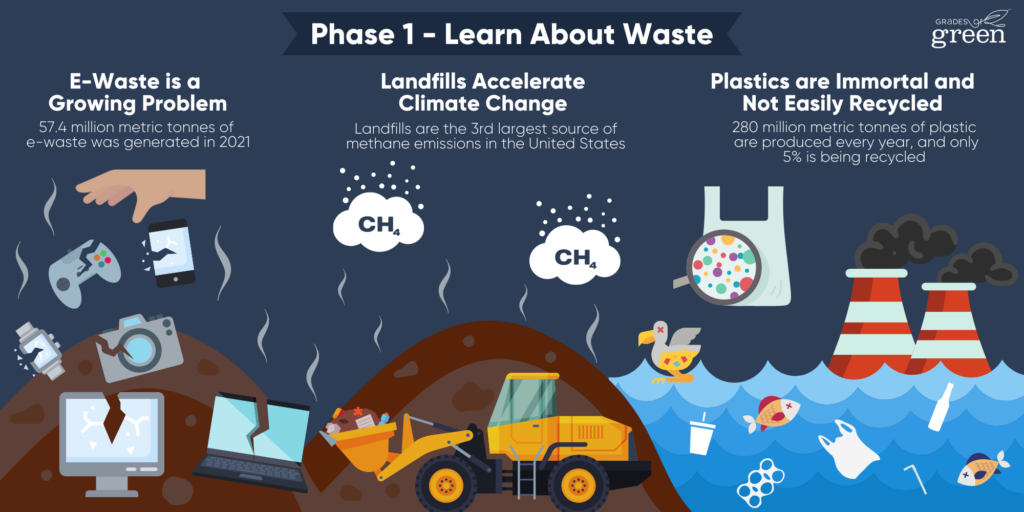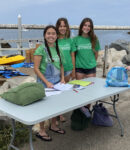
E-Waste is a Growing Problem
In 2021, humans generated 57.4 Million Metric Tonnes (Mt) of E-waste–a number that increases every year. Electronic items such as phones, televisions, computers, tablets, etc. are created with toxic substances like mercury that are harmful to the environment and humans. As humans continue to rely on technology across the world, the amount of E-Waste will continue to grow without protocols to ensure the majority of E-Waste is properly managed and recycled. The solution is to make smarter choices when buying these products and learn how to properly recycle our electronic waste. [1]
Landfills Accelerate Climate Change
Clothing, electronics, single-use plastics, and all the other stuff we buy/use has significant effects on our climate. If our waste is not recycled or burned, it will most likely end up in a landfill. Landfills are the third largest source of methane emissions in the United States. Methane is a greenhouse gas that is created as organisms decompose organic materials below the surface. According to scientists, 25% of our current climate change crisis is driven by methane created by humans. If we reduce our use, manage our waste responsibly, and recycle to send less waste to landfills, we can help mitigate climate change. [2]
Plastics Are Immortal and Not Easily Recycled
Most plastic items never fully disappear; they just break down into smaller and smaller pieces called microplastics over the course of hundreds of years. Every year, around 380 million metric tons of plastic are being produced, with 150 million tons coming from single use plastics which are designed to be used once before being discarded. Where does all this plastic go? Most waste is either incinerated or landfilled–it is rarely recycled. However, all three of these options produce greenhouse gas emissions.The best solution to reduce greenhouse gasses caused by waste is to reduce our use of single use plastics and other products we don’t need. [3]
Project Examples

Change Laws!
This Eco-Grant winning team from Malezi Community Primary School set out to reduce the amount of waste in their community. This team organized multiple clean ups throughout the year and collected over 2 metrics tonnes of waste to beautify their city.

Help Your School District!
This Eco-Grant winning team from Whitney High School set out to replace plastic utensils in their cafeteria with compostable alternatives. They held many food fundraisers to purchase their own compostable utensils that the school could use in addition to utensil dispensers.

Get Creative!
This Eco-Grant winning team from Mira Costa High School set out to educate their community about waste and hosted multiple waste reduction events. These events included a campus clothing swap and a harbor clean-up on kayaks and paddle boards.
More Project Ideas
- Host a clean up
- Help your school establish waste sorting
- Convince restaurants in your area ban styrofoam
- Create a school curriculum to share with your school
- Help your school adopt recycling practices
- Create a social media campaign
When you are finished, enter your shared Google folder and locate the Phase 1 Forms worksheet located in the Phase 1 folder. Complete the questions under the Phase 1.1 section.
Resources
Return to Phase 1.1
Move Forward to Phase 1.2
Looking for Another Page? Head over to the Campaign’s Table of Contents.